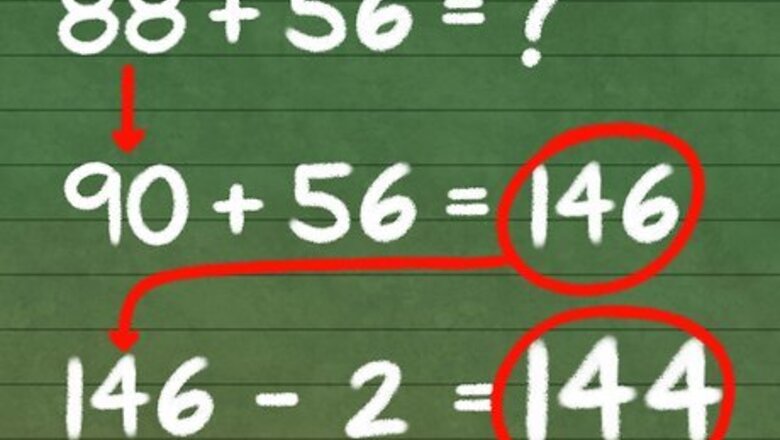
views
Prerequisite: Knowing basic addition, subtraction, multiplication and division by memory.
Addition and Subtraction
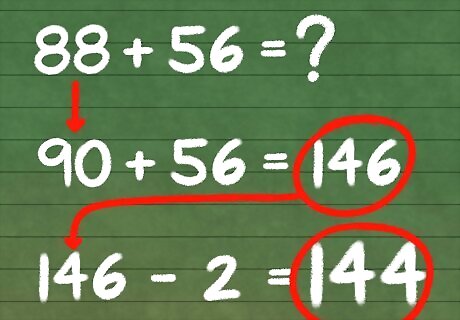
Convert difficult to add numbers to easy to add numbers. Round the number (to be added) up to the next highest multiple of ten. Add to the other number. Subtract the amount rounded up. Example 88 + 56 = ? ; Round 88 up to 90. Add 90 to 56 = 146 Subtract the two added to 88 (to round up to 90). 146 - 2 = 144 ; the answer! This process is simple reframing of the problem as 56 + (90 -2 ). Examples of other usages of this technique: 99 = (100 - 1); 68 = (70 - 2) You can use a similar reframing technique for subtraction, too.
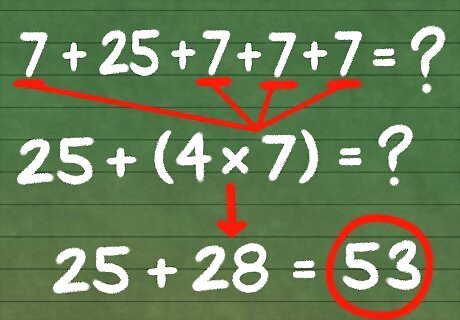
Convert addition to multiplication. Multiplication is addition of multiple occurrences of the same number. Note how many times a number to be added is repeated. For example: 7 + 25 + 7 +7 +7 = becomes 25 + (4 × 7) = 25 + 28 = 53
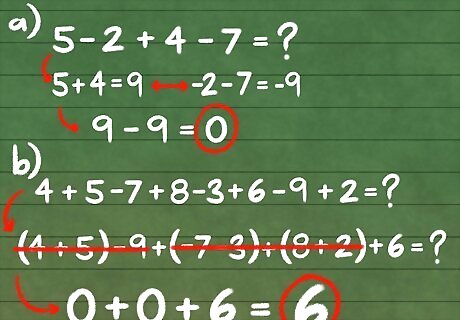
Cancel Additive Opposites. Additive opposites can be +7 - 7. Additive opposites can also be 5 - 2 + 4 - 7. Look for numbers that add or subtract for a total of 0. Using the example above: 5 + 4 = 9 is the additive opposite of -2 -7 = -9 Since they are additive opposites, no actual addition of all four numbers is needed; the answer is 0 (zero) by cancelling. Try this: 4 + 5 - 7 + 8 - 3 + 6 - 9 + 2 = becomes: (4 + 5) - 9 + ( -7 - 3) + (8 + 2) + 6 = By grouping and remember, don't add them; just remove additive opposites from the problem. 0 + 0 + 6 = 6
Multiplication
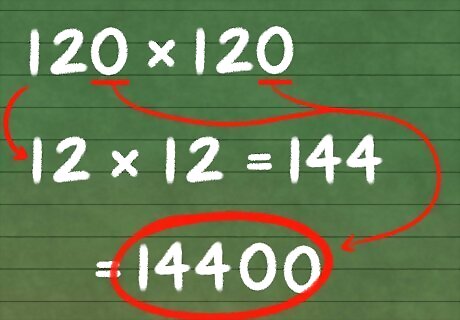
Manage numbers ending in 0 (zero). For example, 120 × 120 = Count the total number of zeros on the end. (In this case, 2). Do the rest of the problem. 12 × 12 = 144 Append the number of zeros counted to the end of the number; 14400
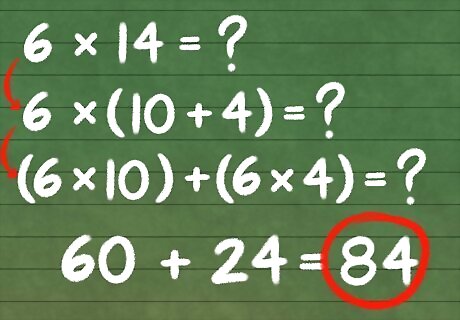
Use the distributive property of multiplication to convert difficult to multiply numbers to easy to multiply numbers. You might then be able to use some of the techniques below. For example: Instead of 14 × 6 break 14 down into 10 and 4, and multiply both by 6, then add them together...14 × 6 = = 6×(10 + 4) = (10 × 6) + (4 × 6) = 60 + 24 = 84. For example: Instead of: 35 * 37 = ? do this: 35 × (35 + 2) = = 35 + (2 × 35) = 1225 + 70 = 1295
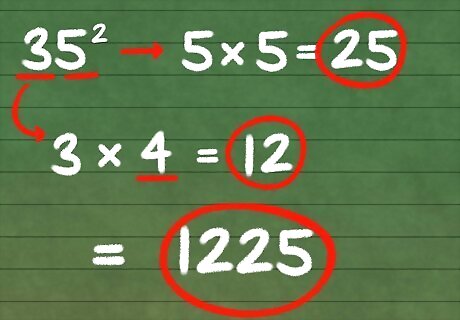
Square numbers ending in 5 (five). Using; 35 = ? Ignoring the 5 on the end, multiple the number (3) by the next highest number (4). 3 × 4 = 12 Append 25 to the end of the number. 1225
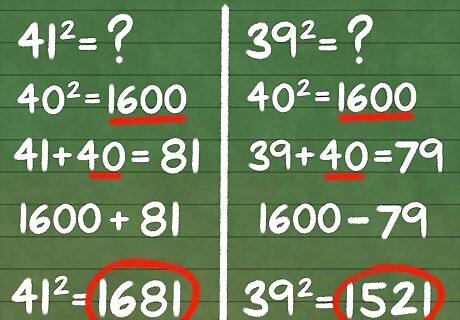
Square numbers one less or more than a square you already know. Using 41 = ? and 39 = ? Figure the square you already know. 40 = 1600 Decide if you need to add or subtract. You will add with a larger square and subtract with a smaller one. Add the original number that was squared to the next number to be squared. 40 + 41 = 81 40 + 39 = 79. Make the addition or subtraction. 1600 + 81 = 1,681 ---> 41 = 1,681 1600 - 79 = 1,521 ----> 39 = 1,521 This only works for numbers one unit above or below the original.
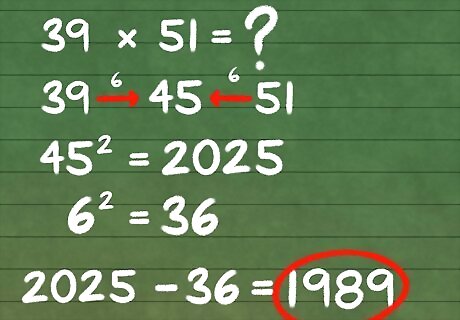
Simplify multiplication by using "Difference of Squares". Using 39 × 51 = ? Find the number that is equidistant of both numbers. In this case, 45, which is 6 away from both numbers. Square that number. 45 = 2025 Square the distance the numbers are from the central number. 6 = 36 Subtract that number from the first square. 2025 - 36 = 1989 If you have taken algebra, the formula is expressed as: 51 × 39 = (45 + 6)×(45 - 6) = 45 -6 ( x + y )×( x - y ) = x - y For a more complete explanation, see How to How to easily solve math problems using difference of squares.
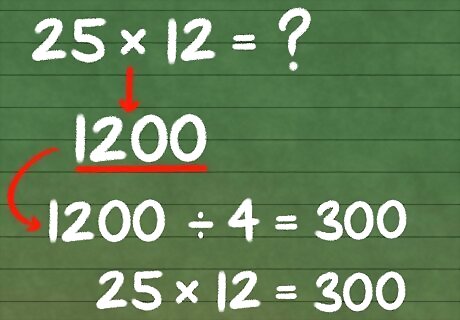
Multiply by 25. Using 25 × 12 = ? Multiply by 100 by appending two zeros to the end of the other (not 25) number. 25 × 12 1200 Divide by 4. 1200 ÷ 4 = 300 25 × 12 = 300 For more details, see How to Multiply by 25 in your head.













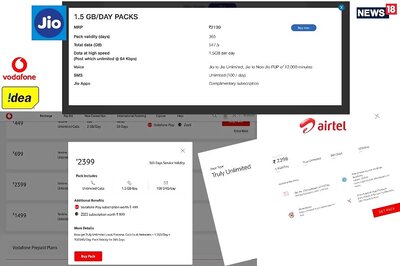



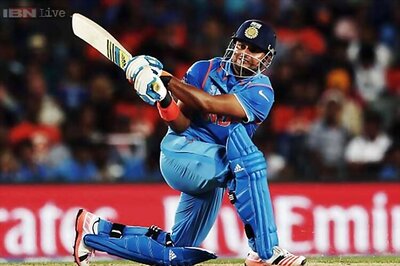
Comments
0 comment